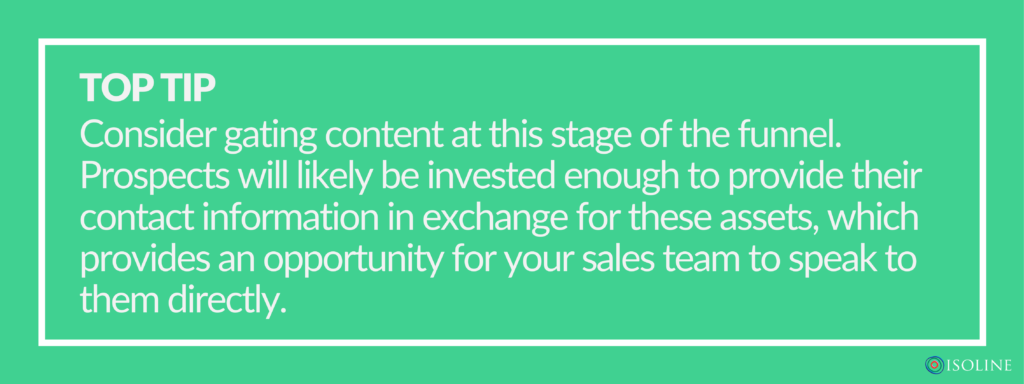The B2B marketing funnel is fundamentally changing. While a prospect’s progress through the funnel has traditionally been driven by marketers, we are now seeing greater autonomy and empowerment from potential buyers. In practice, this means they prefer to conduct independent research before reaching out to sales or product marketing representatives. In fact, the average person consumes 11.4 pieces of content before making a purchase decision.
Given that buyers are preferring to move through the cycle autonomously, how can marketers best support their journey through the purchase cycle? The answer lies in ensuring your funnel is shaped correctly to guide prospects towards conversion with minimal intervention. And doing this means having the right types of content at the right stages. Those that get this wrong will suffer leaks in their funnel that will lose prospects and ultimately cost them conversions.
Tailor your content to your prospect’s needs
To best support prospects, the B2B funnel needs to provide different types of content that are suited to the customer’s needs at each stage. What a prospect needs when they have just entered the funnel is much different than their requirements as they approach conversion. Accordingly, the content at every step must be in the right format and offer the information they need to move forward.
Below are our recommendations for what content is best suited to each stage of the funnel, moving each lead from discovery through to consideration and finally to conversion.
Top of funnel (Discovery)
The purpose of content at the top of the funnel should be to provide awareness of your solution. At this stage, potential customers are likely to be completely unaware of your product or service. They may be trying to better understand what pain points are affecting their business, or what solutions are available to help them solve them. Ideally, your content should identify their problem and solution, establish your business as an expert thought leader, and build their trust.
- Social media posts are an opportunity to provide multimedia shareable content to a wide audience
- Infographics visually convey your data and have the potential to be shareable
- Videos will account for 82% of all internet traffic by 2022, and can visually and punctually explain a solution whilst producing higher SEO and engagement
- Emails – can reach new audiences and begin relationships through nurturing campaigns

Middle of funnel (Consideration)
Now that the prospect is aware of your solution and has moved to middle of funnel, they will likely be weighing up their options before making a decision. At this stage, they want to understand your unique selling points and benefits compared to other options available to them. And with the average buyer engaging with 3-5 pieces of content before talking to a sales representative, this is your opportunity to educate them about your offering and demonstrate why you’re the best fit for their needs.
- Case studies build trust and a reputation of industry expertise for your business
- FAQs can address their doubts about your solutions and establish why you are a good fit for their needs
- Webinars are used by 60% of marketers because they enable real-time audience interaction and the opportunity for more personal engagement
- Video demonstrations can communicate significant amounts of product information condensed into a short space of time

Bottom of funnel (Conversion)
Most of the legwork is over by this point and you have a qualified lead who is interested in your product or service. So what do you need to provide for them to take that final step? Potential customers are looking for as much detail as possible on your offering to ensure they can make an informed purchase. Content here needs to be long-form, highly detailed, and steeped in product information.
- Whitepapers are an authoritative and detailed report that can demonstrate your expertise and insight into your customer’s industry
- Video tutorials and ‘how-to’ guides offer in-depth guidance for the success of your product
- Case studies further showcase your capabilities in a given industry with proven results from an existing customer
- Demos and consultations place your product into the hands of your lead to give them hands-on experience before making a purchase

Evaluate your metrics for a more organic funnel
While these suggestions will help you build a marketing funnel populated with the right types of content at the right steps, you must remember that it is an organic process. Continually evaluate your marketing metrics to see how the funnel is performing. If you can see that prospects are exiting the funnel at a particular stage, consider how you can revitalise it with new assets. By using this content strategy, you can be sure of a B2B marketing funnel that organically progresses your leads.
Get in touch with us at hello@isolinecomms.com to find out how we can help you make a tailored B2B marketing funnel that works for you.
Photo by Avel Chuklanov on Unsplash



